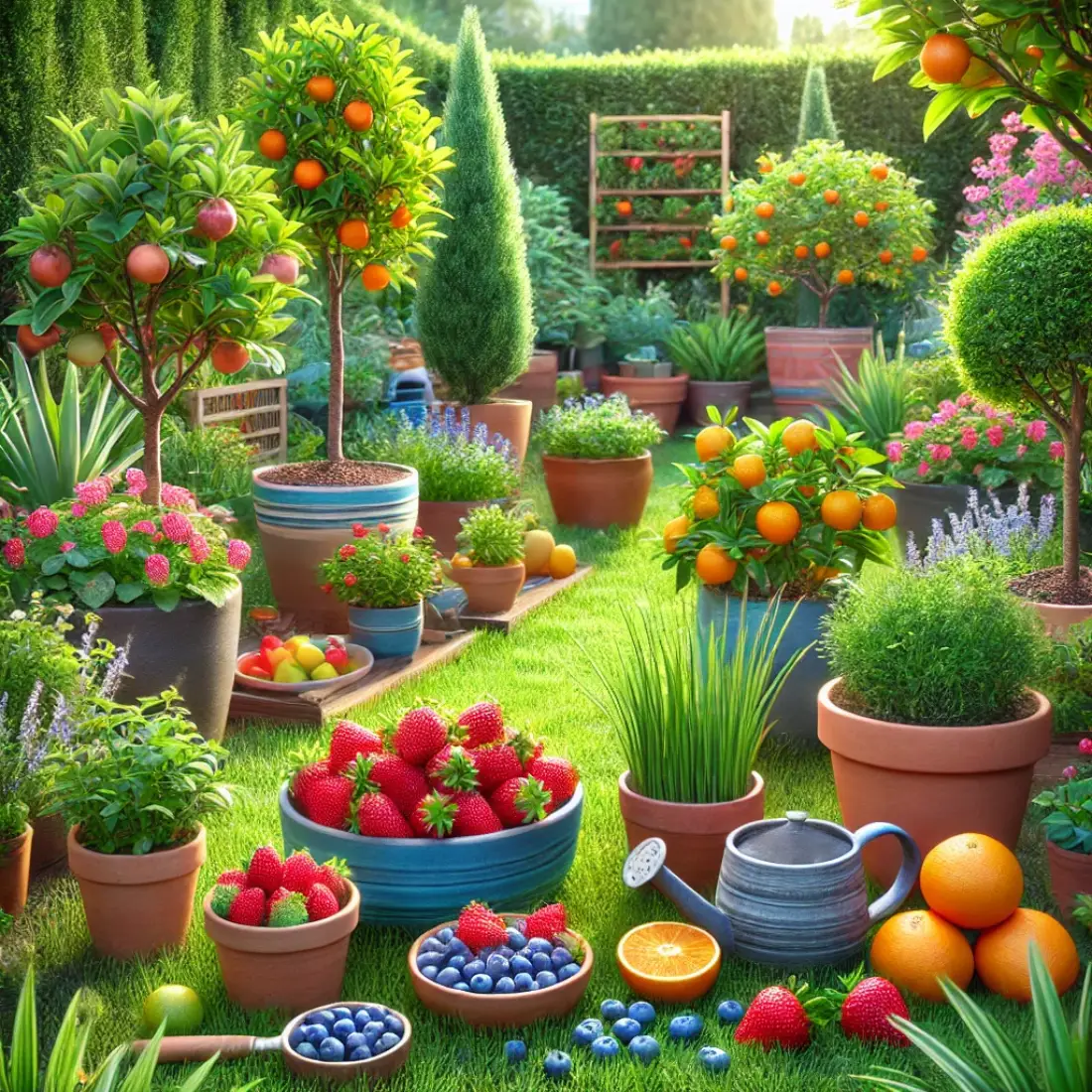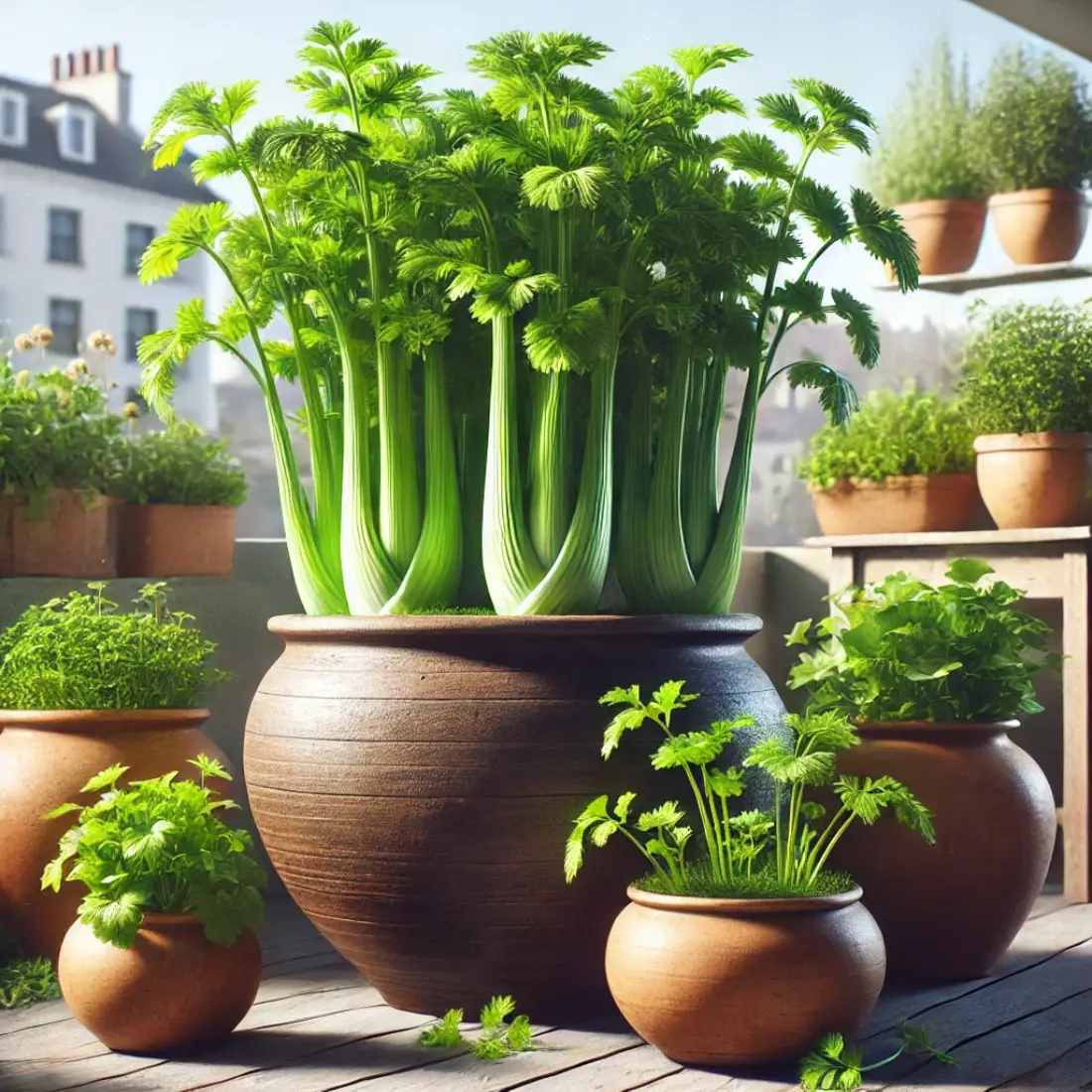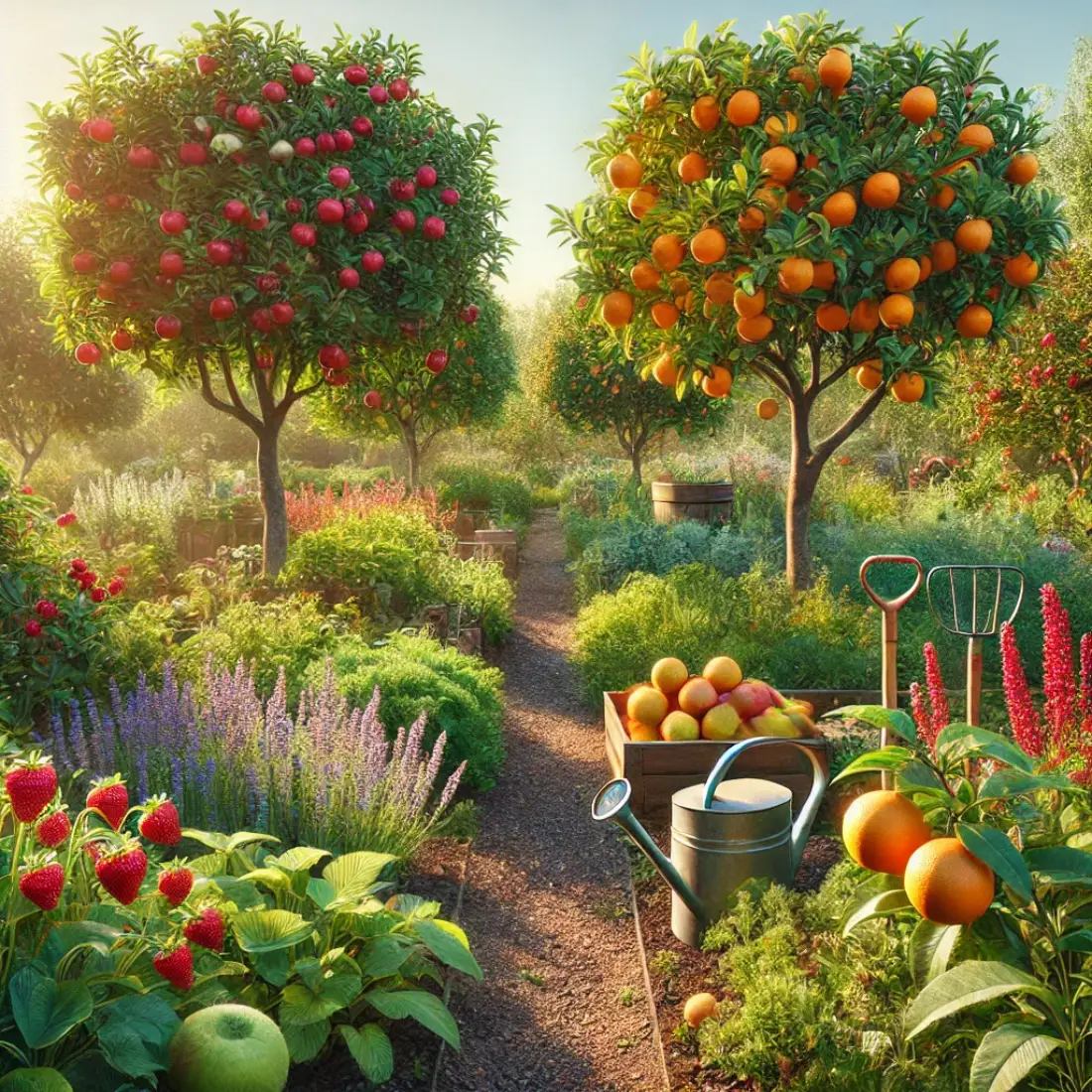Growing fruit in containers offers numerous advantages. It’s a space-saving solution perfect for small gardens, balconies, or patios. Container gardening provides flexibility in placement, allowing you to move plants to optimal sunlight or protect them from harsh weather. It also offers improved pest and disease control, as well as easier access for maintenance and harvesting.
- Space-Saving Solution: Perfect for small gardens, balconies, or patios.
- Flexibility: Move containers for optimal sunlight or weather protection.
- Improved Pest and Disease Control: Easier to manage and treat.
- Easier Maintenance and Harvesting: Convenient access to plants.
- Soil Quality Control: Better management of water and nutrient levels.
- Suitable for Various Fruits: Ideal for strawberries, blueberries, citrus, tomatoes, and dwarf fruit trees.
- Seasonal Adaptability: Easy to adjust care routines and overwinter plants.
Best Fruits for Container Gardening
Growing fruit in containers allows gardeners to cultivate a wide variety of fruits, even in limited spaces. Here are some of the best fruits for container gardening:
Strawberries
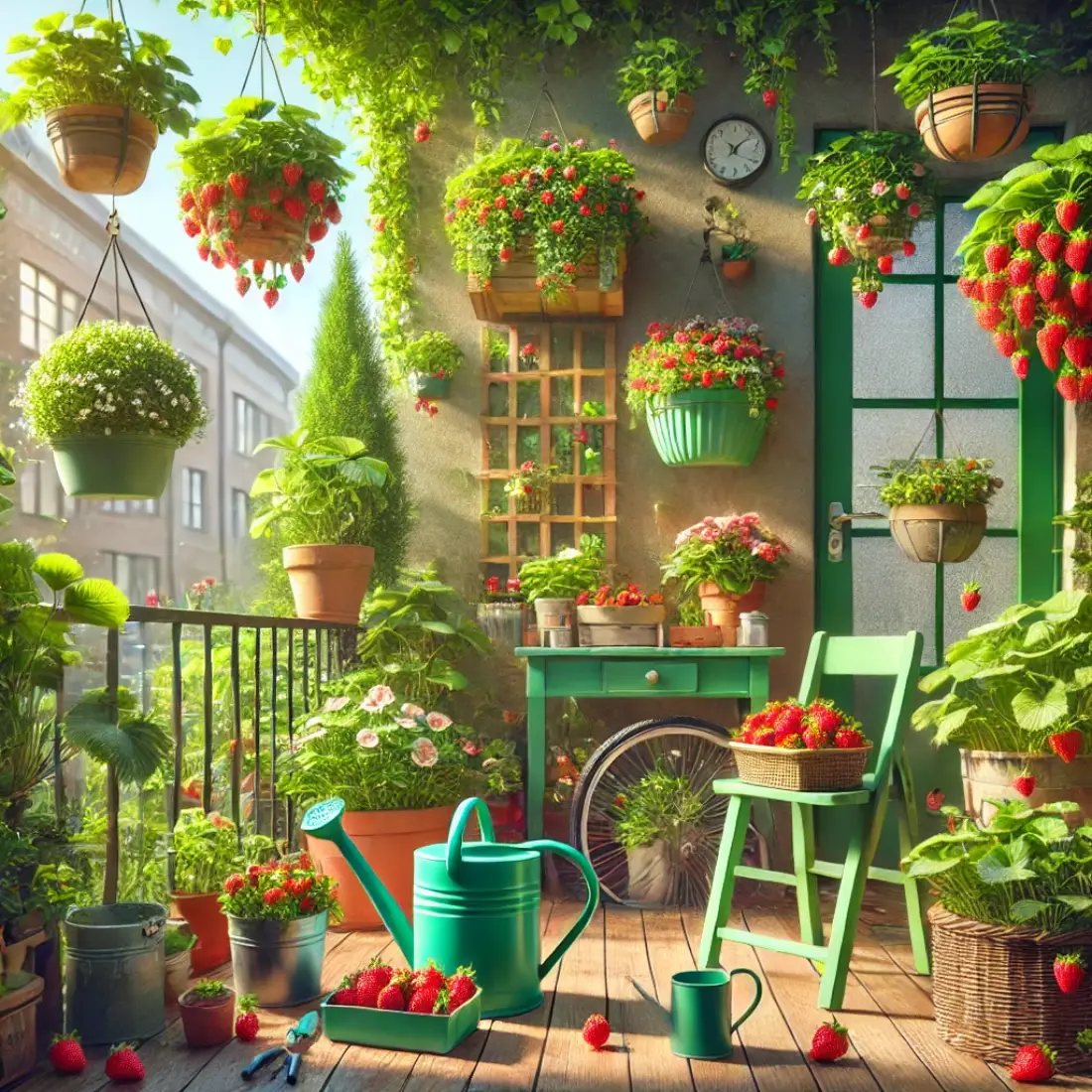
Strawberries are perfect for container gardening due to their compact size and shallow root system. They thrive in hanging baskets, pots, and window boxes. Choose everbearing varieties for a continuous harvest throughout the growing season. Ensure the soil is well-draining, and place the container in full sun for the best results.
Blueberries

Blueberries are well-suited for container gardening, especially dwarf varieties like ‘Top Hat’ or ‘Sunshine Blue.’ They require acidic soil, so use a potting mix designed for acid-loving plants or amend the soil with peat moss. Blueberries need full sun and consistent watering, with good drainage to prevent root rot. Adding mulch can help retain moisture and maintain soil acidity.
Citrus Fruits
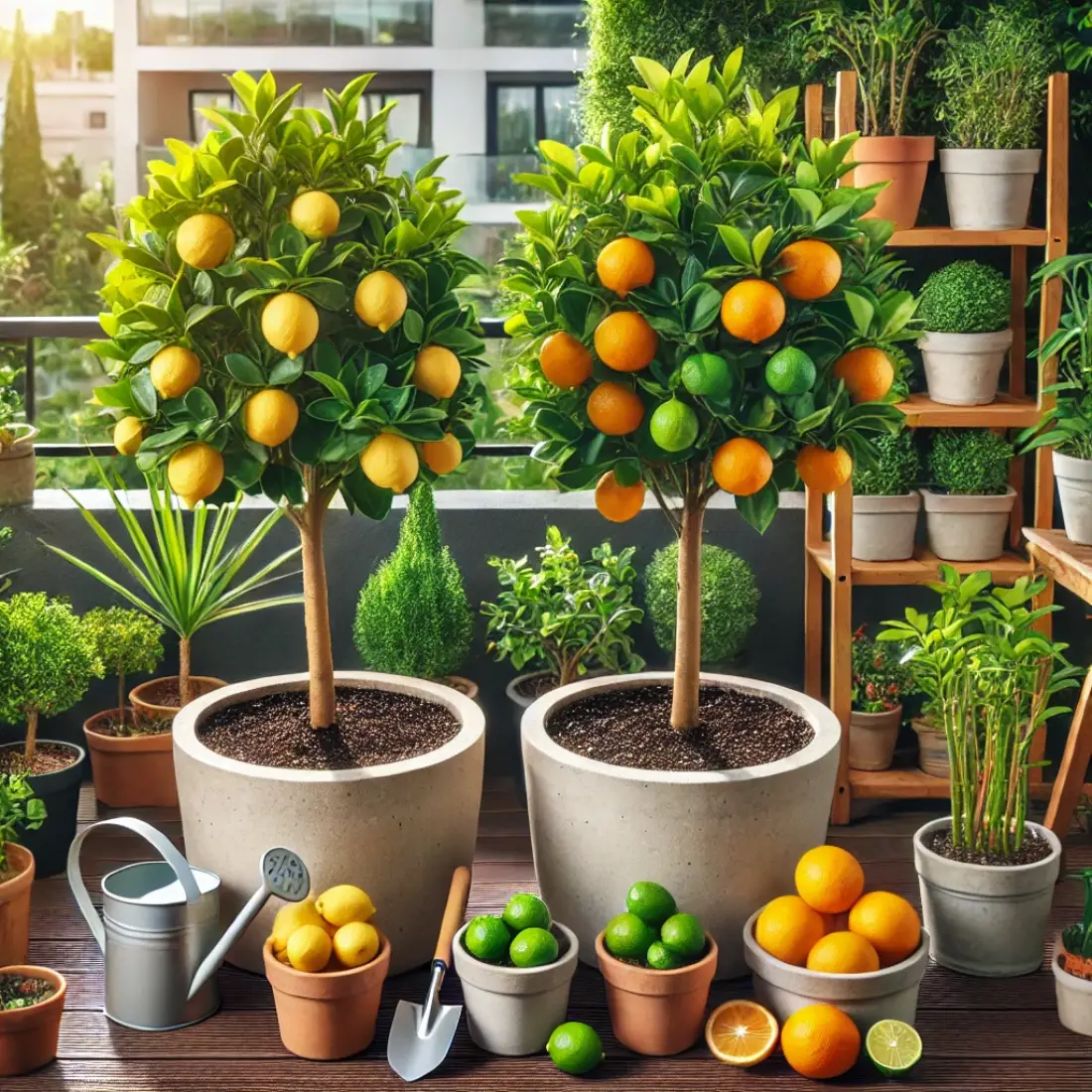
Dwarf citrus trees, such as lemons, limes, and oranges, are ideal for container gardening. Varieties like ‘Improved Meyer Lemon’ or ‘Calamondin Orange’ are popular choices. Citrus trees need a large container, at least 10-15 gallons, and well-draining potting soil.
Place them in a sunny spot, and ensure they receive 8-12 hours of sunlight daily. Regular feeding with a citrus-specific fertilizer will promote healthy growth and fruit production.
Figs

Figs are a surprisingly good choice for container gardening, as their roots naturally thrive in confined spaces. Dwarf varieties like ‘Petite Negra’ or ‘Little Miss Figgy’ are excellent options.
Figs prefer a large container, around 15-20 gallons, and well-draining soil. Place the container in full sun, and water consistently, allowing the soil to dry slightly between waterings. Fig trees are relatively low-maintenance and can be brought indoors during winter in colder climates.
Dwarf Apple and Pear Trees
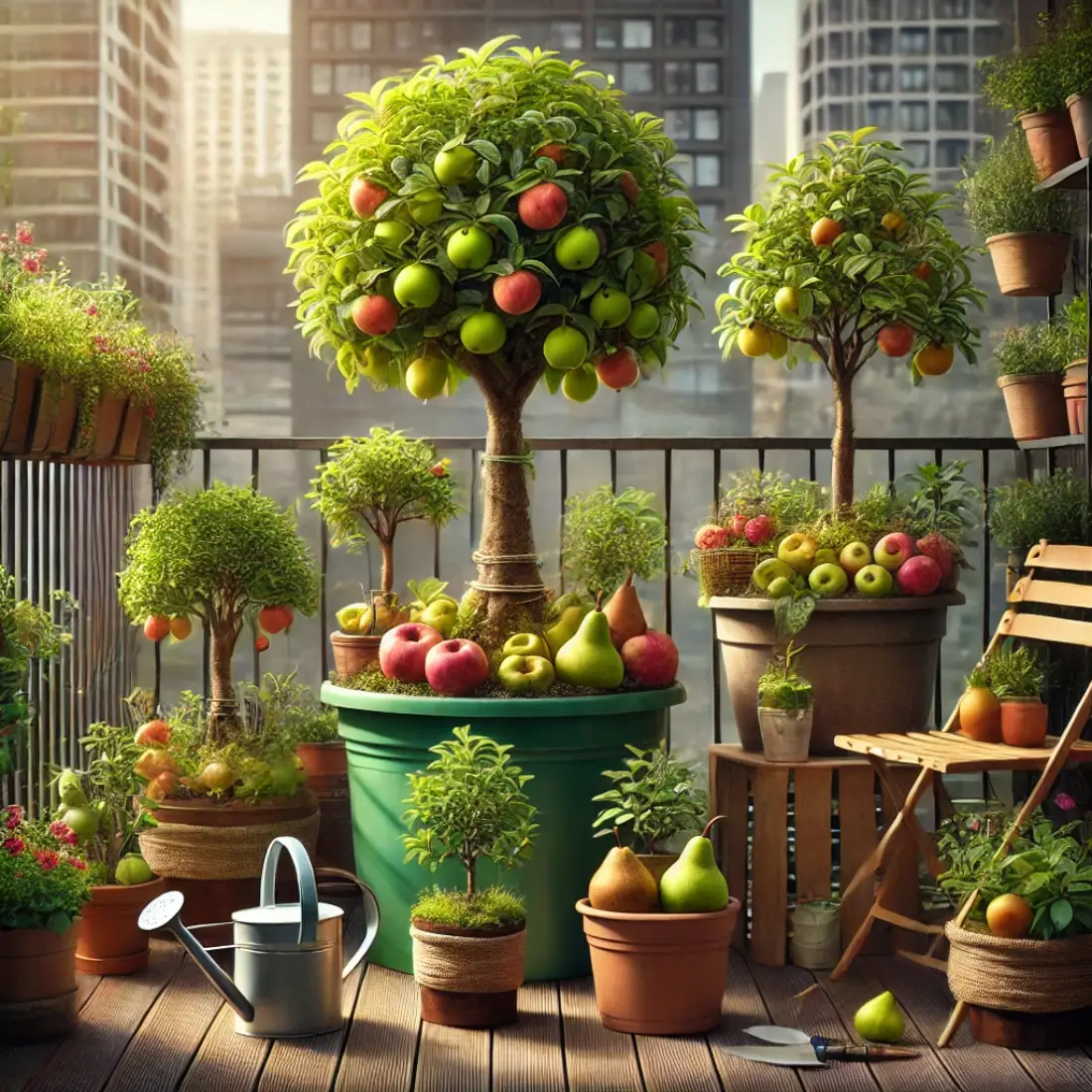
Dwarf apple and pear trees, such as ‘Dwarf Granny Smith’ or ‘Garden Delicious,’ can be grown successfully in containers. These trees require a large pot, at least 15-20 gallons, and well-draining potting soil.
They need full sun, regular watering, and annual pruning to maintain their shape and encourage fruit production. Cross-pollination is necessary for fruit set, so consider planting two compatible varieties or a self-pollinating variety if space is limited.
Raspberries and Blackberries
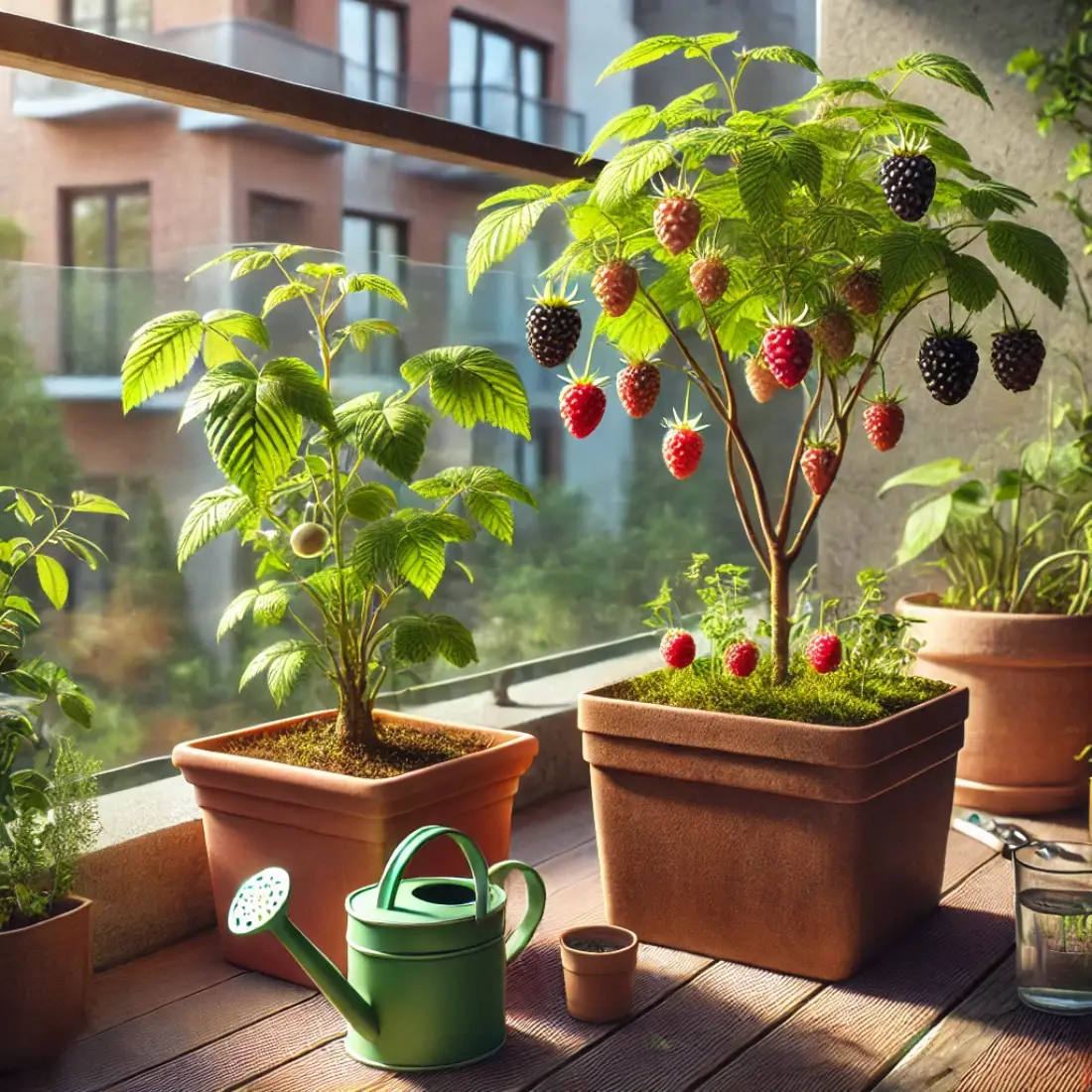
Certain varieties of raspberries and blackberries, like ‘Raspberry Shortcake’ and ‘Baby Cakes Blackberry,’ are bred specifically for container gardening. These compact, thornless varieties produce abundant fruit in small spaces. Use a large container, around 10-15 gallons, and provide well-draining soil. Place the container in full sun and water consistently, ensuring the soil remains moist but not waterlogged.
Grapes
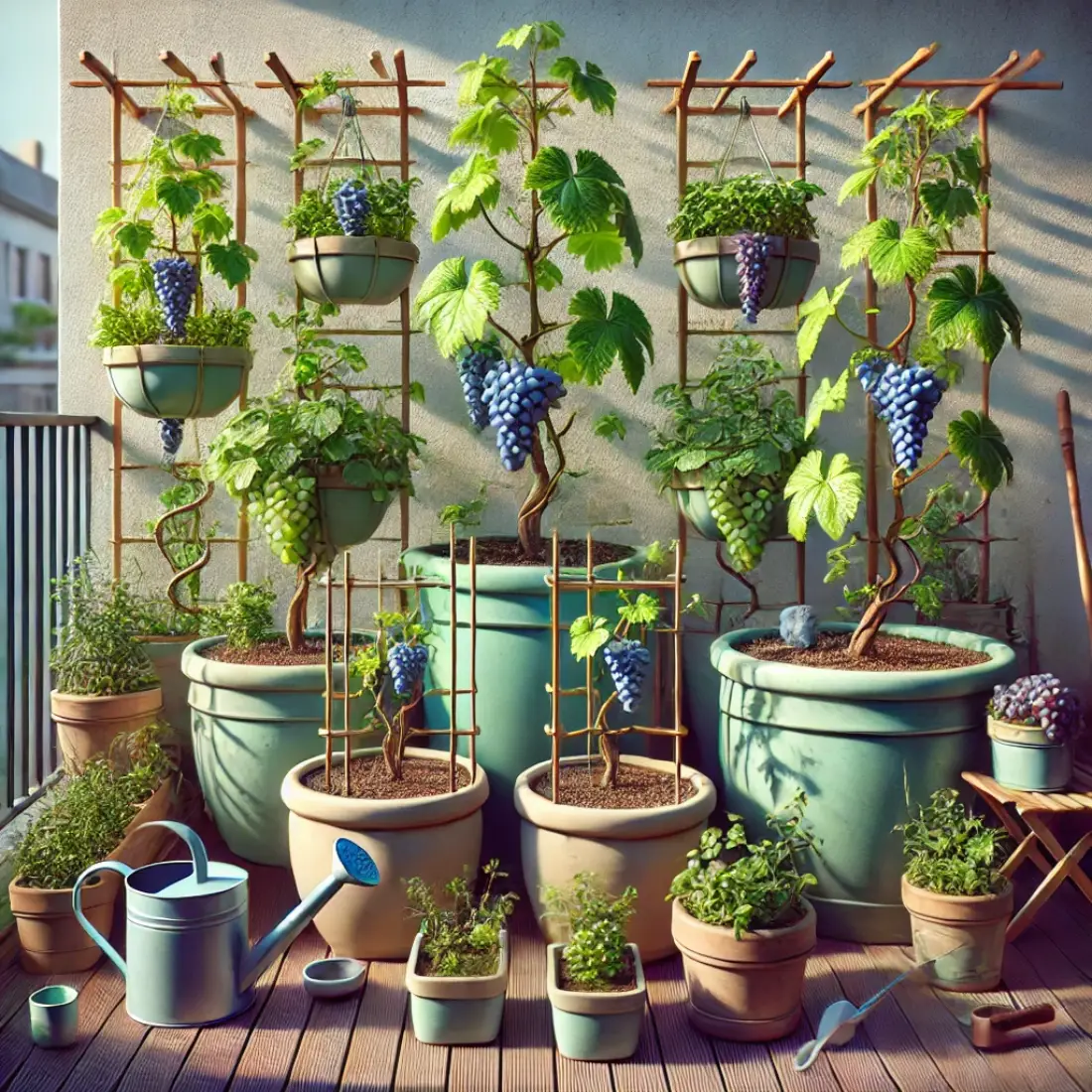
Grapes can be grown in containers if given adequate support for their vigorous growth. Choose compact varieties like ‘Pixie Grape’ or ‘Sweet Sapphire.’ Use a large, deep container with well-draining soil, and provide a trellis or support system for the vines. Grapes need full sun and regular watering, with good air circulation to prevent fungal diseases.
Selecting the Right Containers
Choosing the right containers is crucial for successful fruit gardening. The size, material, and drainage capabilities all impact plant health and productivity.
Size and Depth
- Small Fruits (Strawberries, Blueberries): 5-10 gallon containers.
- Dwarf Trees (Citrus, Apples, Pears): 15-20 gallon containers.
- Figs: At least 5-15 gallon containers.
Material Options
- Plastic: Lightweight and retains moisture well, but may overheat in direct sunlight.
- Ceramic and Clay: Attractive and breathable but can be heavy and prone to cracking in cold weather.
- Fabric Pots: Excellent drainage and air pruning of roots, but may dry out quickly.
Drainage Considerations
- Ensure containers have multiple drainage holes to prevent waterlogging.
- Elevate pots slightly to allow excess water to escape.
Selecting the right container ensures your fruit plants have the space, stability, and environment they need to thrive.
Soil and Organic Fertilizer Requirements
Ideal Soil Mix
Choosing the right soil mix is essential for healthy container fruit gardening. An ideal mix includes:
- Well-Draining Soil: Use a high-quality potting mix specifically designed for containers. Avoid garden soil, which can compact and hinder root growth.
- Components: A mix of peat moss, perlite, and compost provides good drainage and nutrient retention.
- pH Level: Adjust the soil pH according to the fruit type. For example, blueberries need acidic soil (pH 4.5-5.5).
Proper drainage prevents waterlogging, which can lead to root rot. Ensure containers have multiple drainage holes and consider adding a layer of gravel at the bottom for extra drainage.
Organic Fertilizer Types
Organic fertilizers improve soil health and provide essential nutrients:
- Compost: Enriches soil with organic matter and beneficial microbes.
- Manure: Well-aged manure adds nitrogen and other nutrients but avoid fresh manure as it can burn plant roots.
- Fish Emulsion: A liquid fertilizer high in nitrogen, promoting healthy leaf and stem growth.
- Bone Meal: Provides phosphorus, essential for root development and fruit production.
Mix compost or aged manure into the soil before planting. Apply liquid fertilizers like fish emulsion every 2-4 weeks. Top-dress with compost mid-season for an extra nutrient boost.
Pest and Disease Organic Management
Managing pests and diseases organically in container fruit gardening is crucial for healthy plants and bountiful harvests.
Common Pests
- Aphids: Small, sap-sucking insects causing curled leaves and stunted growth. Control with neem oil or insecticidal soap.
- Spider Mites: Tiny pests that create fine webs and yellow spots on leaves. Use a strong water spray or insecticidal soap to manage them.
- Whiteflies: Small, white flying insects causing leaf yellowing. Introduce beneficial insects like ladybugs or use neem oil.
Common Diseases
- Powdery Mildew: White, powdery fungus on leaves. Remove affected leaves and apply a mix of water and baking soda or neem oil.
- Blight: Brown spots on leaves and fruit. Prune affected parts and improve air circulation. Copper fungicides can be used preventatively.
- Root Rot: Caused by overwatering. Ensure proper drainage and avoid waterlogging.
Organic Control Methods
- Companion Planting: Grow herbs like basil or marigold to repel pests.
- Beneficial Insects: Introduce ladybugs, lacewings, and predatory mites to control pest populations naturally.
- Neem Oil: A versatile organic pesticide and fungicide effective against many pests and diseases.
- Homemade Sprays: Use a mix of water, dish soap, and garlic or chili to deter pests.
Pollination Needs for Container Fruits
Pollination is essential for fruit set and development. Container-grown fruits need effective pollination to yield a good harvest.
Self-Pollinating vs. Cross-Pollinating
- Self-Pollinating: Some fruits, like tomatoes, strawberries, and certain citrus varieties, can self-pollinate.
- Cross-Pollinating: Others, like apples and pears, require pollen from another variety to produce fruit.
Place containers near flowering plants to attract bees and butterflies. Use organic practices to avoid harming beneficial insects.
For indoor or less accessible plants, use a small brush or cotton swab to transfer pollen from flower to flower.
Seasonal Care and Overwintering
Seasonal adjustments are crucial for the health of container-grown fruit plants.
Spring and Summer
- Watering: Increase frequency as temperatures rise, keeping soil consistently moist but not waterlogged.
- Fertilizing: Apply organic fertilizers every 2-4 weeks to support growth and fruiting.
- Pruning: Remove dead or overcrowded branches to improve air circulation and sunlight penetration.
Fall
- Reduce Watering: Gradually reduce watering as plants enter dormancy.
- Fertilizing: Stop fertilizing to allow plants to prepare for winter.
Overwintering Strategies
- Move Indoors: Bring sensitive plants like citrus indoors to a cool, sunny location.
- Insulate Containers: Wrap pots with bubble wrap or burlap to protect roots from freezing.
- Use Protective Covers: Employ frost blankets or cloches to shield plants from cold.
FAQs about Growing Fruits in Containers
Can you grow fruit trees in containers?
Yes, many fruit trees can be grown in containers, especially dwarf varieties. They require large pots, good drainage, and regular care.
How often should I water my container fruit plants?
Watering frequency depends on the plant and weather conditions, but generally, container fruit plants need to be watered daily during hot weather and less frequently during cooler periods.
What size container do I need for fruit plants?
Small fruits like strawberries and blueberries need 5-10 gallon containers, while dwarf trees and larger plants require 15-20 gallon containers.
Do I need to fertilize my container fruit plants?
Yes, container fruit plants need regular fertilization because nutrients leach out of the soil more quickly. Use organic fertilizers every 2-4 weeks during the growing season.
Can I grow fruit plants indoors?
Some fruit plants, like certain citrus varieties and strawberries, can be grown indoors if they receive enough light. Consider using grow lights to supplement natural sunlight.
What are the best fruits to grow in containers?
Strawberries, blueberries, tomatoes, citrus fruits, figs, and dwarf apple and pear trees are among the best fruits to grow in containers.
How can I prevent pests on my container fruit plants?
Use organic pest control methods like neem oil, insecticidal soap, and introducing beneficial insects. Regularly inspect plants for signs of pests and diseases.
How do I ensure proper pollination for my container fruit plants?
Place containers near flowering plants to attract pollinators. For indoor or less accessible plants, use hand pollination techniques with a small brush or cotton swab.
Can I keep container fruit plants outdoors year-round?
Some container fruit plants can stay outdoors year-round, depending on the climate. In colder regions, bring sensitive plants indoors or insulate containers and use protective covers during winter.
How do I know when to harvest my container-grown fruits?
Harvesting times vary by fruit type. Generally, look for signs of ripeness such as color change, softness, and easy detachment from the plant. Research specific indicators for each fruit variety you are growing.

